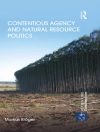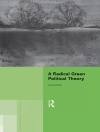The US Department of Defense (DOD) is faced with an overwhelming task in evaluating chemicals that could potentially pose a threat to its deployed personnel. There are over 84, 000 registered chemicals, and testing them with traditional toxicity-testing methods is not feasible in terms of time or money. In recent years, there has been a concerted effort to develop new approaches to toxicity testing that incorporate advances in systems biology, toxicogenomics, bioinformatics, and computational toxicology. Given the advances, DOD asked the National Research Council to determine how DOD could use modern approaches for predicting chemical toxicity in its efforts to prevent debilitating, acute exposures to deployed personnel. This report provides an overall conceptual approach that DOD could use to develop a predictive toxicology system. Application of Modern Toxicology Approaches for Predicting Acute Toxicity for Chemical Defense reviews the current state of computational and high-throughput approaches for predicting acute toxicity and suggests methods for integrating data and predictions. This report concludes with lessons learned from current high-throughput screening programs and suggests some initial steps for DOD investment.
Board on Environmental Studies and Toxicology & Board on Life Sciences
Application of Modern Toxicology Approaches for Predicting Acute Toxicity for Chemical Defense [PDF ebook]
Application of Modern Toxicology Approaches for Predicting Acute Toxicity for Chemical Defense [PDF ebook]
Dieses Ebook kaufen – und ein weitere GRATIS erhalten!
Sprache Englisch ● Format PDF ● Seiten 134 ● ISBN 9780309376679 ● Verlag National Academies Press ● Erscheinungsjahr 2015 ● herunterladbar 3 mal ● Währung EUR ● ID 7144900 ● Kopierschutz Adobe DRM
erfordert DRM-fähige Lesetechnologie












